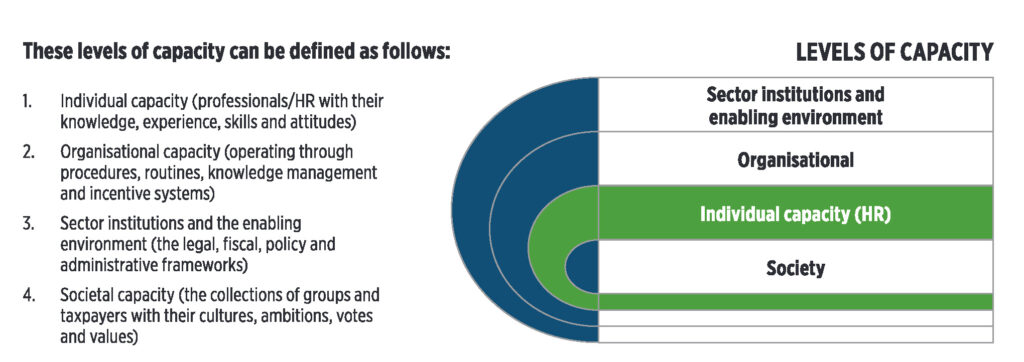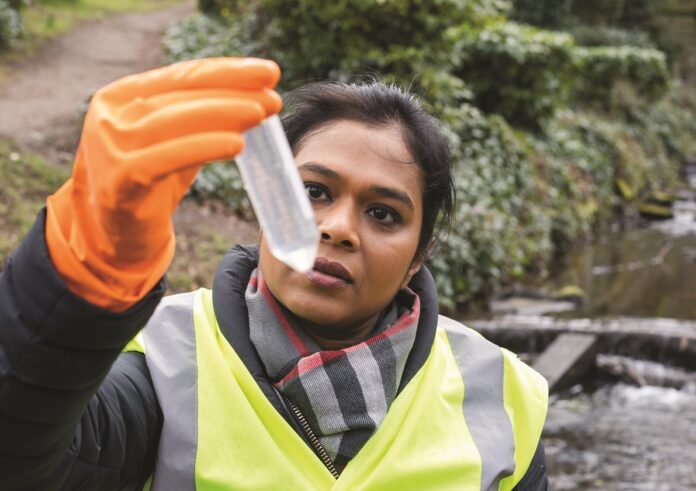Greater priority should be given to building a sustainable, skilled water and sanitation workforce, argues Kirsten de Vette.
It is widely agreed that it will be a challenge to meet the UN’s Sustainable Development Goals (SDGs) by the 2030 deadline, and that huge financial and technological investments will be required to deliver SDG 6 – safe water and sanitation for all. Too frequently, however, discussions around capacity fail to recognise that progress will be dependent on fostering a sustainable and highly skilled workforce, without which the most generous financial commitment will be found wanting and destined for defeat.
Fundamental to the sector’s success is the recruitment, retention and training of a highly skilled and dedicated workforce, along with collaboration with a wide range of stakeholders and community engagement. Without investment in human capacity, increased financial expenditure is likely to result in wasted revenue through imprudent expenditure or unspent funds because of the lack of a skilled workforce. It is critical that the water and sanitation sector places focus on its organisational structures, the competencies that must be attained and developed, and the roles that will need to be created to future-proof growth and innovation in a changing world.
Skills targets
Of the 19 targets listed under SDG 6 in the Report of the Inter-Agency and Expert Group on Sustainable Development Goal Indicators, workforce capacity is barely referenced. In contrast, under SDG 3 to ‘Ensure healthy lives and promote wellbeing for all at all ages’, the health sector has a specific target to: ‘Substantially increase health financing and the recruitment, development, training and retention of the health workforce in developing countries, especially in least developed countries and small island developing States.’ And under SDG 4, to ‘Ensure inclusive and equitable quality education and promote lifelong learning opportunities for all’, the education sector has a target by 2030 to ‘… substantially increase the supply of qualified teachers, including through international cooperation for teacher training in developing countries, especially least developed countries and small island developing States’, and measures this by the proportion of teachers in schools with minimum required qualifications. These indicators have resulted in a clear emphasis on the workforce in these sectors and leveraged increased investment.
“Progress will be dependent on fostering a sustainable and highly skilled workforce”
In the case of health workers, the World Health Organization has an entire department focused on the Health Workforce. It supports countries with national human resource assessments, performs workforce related research to inform advocacy efforts, and provides guidelines for countries that want to take targeted action. Similarly, UNESCO’s Global report on teachers: What you need to know presents the challenges of the workforce capacity gap and provides guidance on how countries can tackle shortages effectively.
Securing leverage for the water sector workforce
Given this context, water and sanitation professionals ought to argue for the inclusion of a workforce target in future indicators, which would draw attention to the sector’s workforce capacity and open funding for further research, and maybe even increase budget availability to create new and much needed jobs. Such targets would also help align capacity development efforts, creating a common goal focused on investing in a sustainable local workforce to overcome the lack of coordination in capacity development identified in previous assessments, including IWA’s report An Avoidable Crisis: WASH Human resource capacity gaps in 15 developing economies, and the United States Agency for International Development’s Addressing the Human Resource Capacity Gaps in Rural Sanitation and Hygiene: Final Report.
Continuous transformation
While capacity development is a term that has its legacy in the colonial era, the term workforce resonates with local ownership. By focusing on the goal of achieving a sustainable, local workforce, capacity development moves from being a deliverable with an endgame to a continuous and transformative process.
Aligning capacity development and human resource development
Implementing an intervention does not automatically ensure its effective application on the job, especially if the necessary organisational support – or perhaps even the availability of jobs – is lacking. This underscores the necessity of a holistic approach to capacity development to cultivate a sustainable, interconnected water and sanitation sector.
Capacity development principles
Within capacity development efforts there are still persistent challenges. Many relate to the failure to recognise the unique interests, needs and preferences of audiences. Capacity assessments in the water, sanitation, and hygiene sectors still report a mismatch between supply and demand, where supply focuses on the offer rather than soliciting what the audiences need. There continues to be an overemphasis on training, which neglects other ways of learning. Some capacity development interventions are still based on a one-size-fits-all approach and, in some cases, unidirectional learning is still practiced. The workload or time that participants have to attend classes or apply learning is also often not considered. Many capacity development efforts lack a comprehensive strategy (also referred to as a capacity development design) and fail to monitor and evaluate effective capacity development.
“The term workforce resonates with local ownership”
So, in addition to an emphasis on a sustainable workforce as the outcome of capacity development, and the adoption of a holistic approach that addresses multiple levels of capacity, there is a need for capacity development efforts to follow capacity development principles, such as:
Time and application: Allowing sufficient time for learning and providing opportunities for participants to apply their knowledge in their work, while considering local governance, mandates and roles to minimise disruption and extra workload.
Tailored solutions: Recognising the unique interests, needs, and approaches of different target audiences and developing customised capacity development activities that align with specific requirements, incorporating diverse learning methods, such as peer-to-peer interactions, virtual tours, mentoring, communities of practice, and working groups.
Engage specialists: Involving practitioners and experts in the design and implementation of capacity development programmes, ensuring a comprehensive design that considers different audiences, learning methods, and impact measurements.
Inclusive learning environment: Valuing participants’ input and expertise to create an inclusive and collaborative learning environment.
Evidence-based approach: Emphasising the importance of measuring impact and using effective capacity development practices. This data-driven approach enables continuous improvement and knowledge sharing.
Learning mindset: Fostering a culture of sharing experiences, success stories, failures and lessons learned, to encourage ongoing learning and adaptation.
By embracing these guiding principles, stakeholders involved in capacity development can address common errors and enhance the effectiveness of interventions in the water, sanitation and hygiene sectors. The ultimate goal of capacity development is to develop a sustainable workforce capable of performing functions, delivering services, and promoting sustainable development. The desired outcome of each capacity development intervention should be to contribute to this wider goal.
If we can agree that this is the case, push for the workforce to be embedded in post-SDG 6 targets, align capacity development with human resource development, think holistically about capacity development, and embrace guiding principles, we can address the effectiveness of our contributions, improve our coordination, and even increase investment in a sustainable water and sanitation workforce. •
More information
- un.org/content/documents/11803Official-List-of-Proposed-SDG-Indicators.pdf
- who.int/teams/health-workforce/health-workforce-development
- unesco.org/en/articles/global-report-teachers-what-you-need-know
- IWA (2014) An Avoidable Crisis: WASH Human resource capacity gaps in 15 developing economies, iwa-network.org/wp-content/uploads/2015/12/1422745887-an-avoidable-crisis-wash-gaps.pdf
- USAID (2023) Addressing the Human Resource Capacity Gaps in Rural Sanitation and Hygiene: Final Report, Washington, DC, USAID Water, Sanitation, and Hygiene Partnerships and Learning for Sustainability (WASHPaLS) #2 Activity
- Lincklaen Arriëns, W.; Wehn de Montalvo, U.; (2013) ‘Exploring Water Leadership,’ Water Policy 15 (S2): 15–41. doi.org/10.2166/wp.2013.010
- Danquah, J.; Crocco, O.; Mahmud, Q.; Rehan, M.; Rizvi, L; (2022) ‘Connecting concepts: bridging the gap between capacity development and human resource development,’ Human Resource Development International. 26. 1-18. doi.org/10.1080/13678868.2022.2108992
The author: Kirsten de Vette is an independent consultant and facilitator specialising in capacity development, knowledge management and learning, and stakeholder engagement in the water, sanitation, and hygiene sectors








